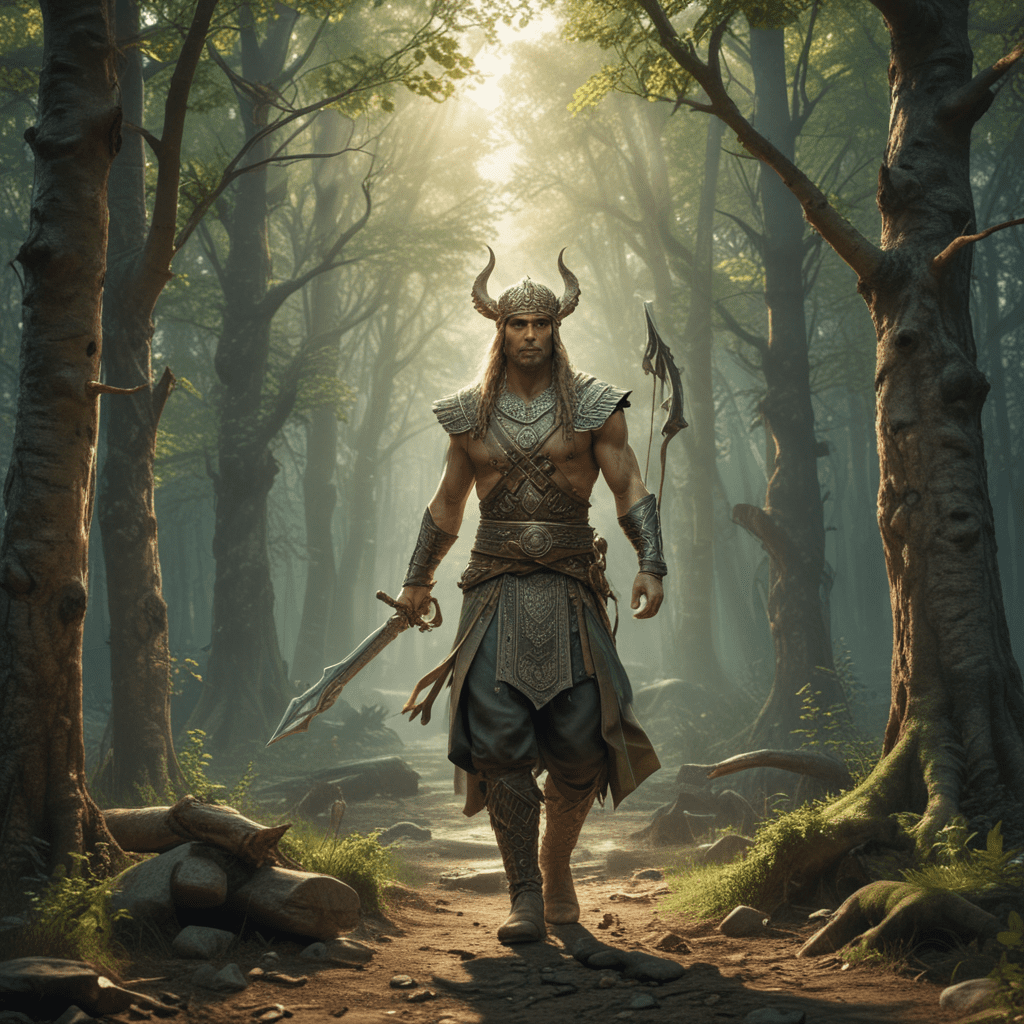1. Introduction
In the captivating tapestry of Native American mythology, the legend of the Stone Giants stands as a testament to the boundless power and enigmatic nature of the ancient world. These colossal beings, carved from the very fabric of the earth, played a pivotal role in the creation and shaping of the universe, leaving an enduring legacy that continues to fascinate and inspire to this day.
2. Origin and Significance of the Stone Giants
The origins of Stone Giants in Native American mythology are shrouded in the mists of time. According to various tribal beliefs, these beings were born from the primordial chaos or emerged from the depths of the underworld. They were often seen as embodiments of nature's strength and resilience, representing mountains, cliffs, and the elemental forces of the earth. Stone Giants possessed immense power and wisdom, and their actions could shape the destiny of both humans and animals.
3. Physical Characteristics and Abilities
Native American legends depict Stone Giants as towering beings of immense stature, their bodies adorned with intricate carvings and symbols. Their skin was often made of stone, giving them both extraordinary strength and an unyielding determination. Stone Giants possessed the ability to manipulate the elements, control nature, and transform themselves into various forms. They were also skilled in hunting, gathering, and crafting, and their knowledge of ancient wisdom was unrivaled.
4. Creation and Role in Native American Cosmology
In many Native American cosmologies, Stone Giants played a crucial role in the creation of the world. They were said to have shaped the mountains, rivers, and valleys, and even to have created the animals and plants that inhabited the earth. Some tribes believed that Stone Giants were the ancestors of humanity, guiding and protecting their descendants throughout history. Their presence in the mythology reflects the deep connection between Native American cultures and the natural world.
5. Variations of the Legend across Different Tribes
The legend of the Stone Giants has been passed down through generations across numerous Native American tribes, each with its unique interpretation and variations. Some tribes, like the Winnebago, saw Stone Giants as benevolent protectors, while others, such as the Navajo, viewed them as fearsome and powerful beings. Despite these differences, the core themes of strength, wisdom, and connection to the earth remain consistent throughout these diverse interpretations.
6. The Winnebago Stone Giant: Wisakedjak
In Winnebago mythology, Wisakedjak is the legendary Stone Giant who played a central role in the creation of the world. He was said to be an enigmatic and mischievous figure, known for his trickery and boundless wisdom. Wisakedjak shaped the landscape, created animals, and introduced fire to humanity. His actions often had both positive and negative consequences, reflecting the dual nature of the Stone Giants.
7. The Navajo Stone Giants: Ye'ii
Navajo mythology depicts the Ye'ii as powerful and revered Stone Giants. They were believed to reside in the sacred mountains and to possess the ability to control the weather, heal the sick, and protect the people. The Ye'ii were often depicted with horns or masks, and their ceremonies were integral to Navajo cultural practices. They represented the balance between nature and the supernatural, guiding and protecting the Navajo people.
8. The Hopi Stone Giants: Kokopelli
In Hopi mythology, Kokopelli is a benevolent Stone Giant associated with fertility, music, and healing. He was often depicted as a hunchbacked flute player, traveling from village to village and bringing joy and blessings. Kokopelli represented the connection between the natural world and human creativity. His presence in Hopi legends reflects the importance of art, music, and storytelling in their culture.
9. The Role of Stone Giants in Traditional Tales and Ceremonies
Stone Giants have been featured prominently in traditional Native American tales and ceremonies for centuries. Their stories teach lessons about the power of nature, the importance of respect, and the intertwined destiny of humans and the natural world. Stone Giants often appeared in creation stories, hunting narratives, and healing rituals, serving as symbols of strength, wisdom, and the enduring connection between the people and the land.
10. Modern Significance and Cultural Impact
The legend of the Stone Giants continues to hold cultural significance for Native American communities today. Their stories and images are still used in traditional ceremonies and art forms. They serve as reminders of the deep connection between Native American cultures and the natural world and the importance of respecting the power and wisdom of the earth. The enduring legacy of the Stone Giants is a testament to the rich and vibrant mythology that continues to shape Native American traditions and beliefs.
FAQs:
Q: What is the significance of Stone Giants in Native American mythology?
A: Stone Giants represent the power, wisdom, and connection between nature and the supernatural. They play crucial roles in creation stories, hunting narratives, and healing rituals.
Q: How do different tribes depict Stone Giants?
A: While the core themes remain consistent, different tribes have their own unique interpretations of Stone Giants. Some see them as benevolent protectors, while others view them as fearsome and powerful beings.
Q: What is the role of Wisakedjak in Winnebago mythology?
A: Wisakedjak is the Winnebago Stone Giant who shaped the landscape, created animals, and introduced fire to humanity. He is known for his trickery and boundless wisdom.
Q: How are Stone Giants connected to Native American ceremonies?
A: Stone Giants often appear in traditional tales and ceremonies, representing strength, wisdom, and the interconnectedness of humans and nature. Their presence in these ceremonies serves to guide and protect the people.



